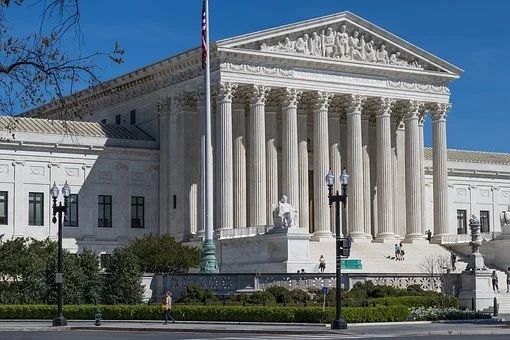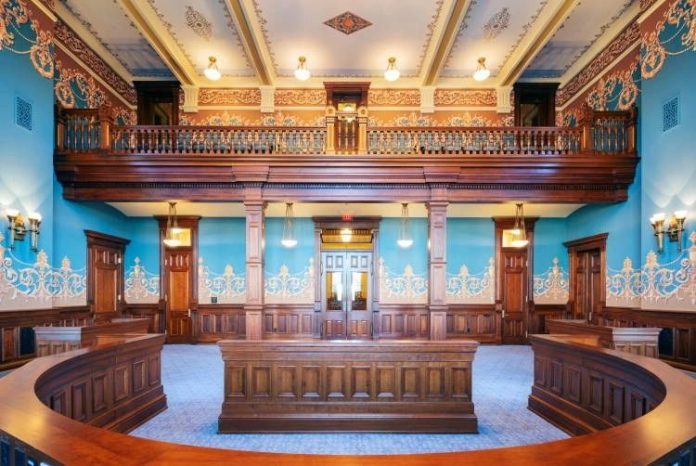
| Op-ed in National Review by Committee for Justice president Curt Levey, who also represented the plaintiffs in Grutter v. Bollinger: The “diversity rationale” that justified racial preferences in college admissions for almost half a century met its demise in the Supreme Court last Thursday. Its fate should surprise no one because it was always based on a lie. The Court was considering lawsuits by Students for Fair Admissions (SFFA) against Harvard College and the University of North Carolina, challenging the preferences — essentially lower admissions standards — given to black and Hispanic college applicants. The record indicates that their admissions systems were designed, in part, to ensure that there were not too many Asian students in each entering class. The defendant schools did not deny that they were treating applicants of different races differently. Instead, the central legal issue before the Court was whether seeking the purported educational benefits of a broadly diverse student body — the diversity rationale — should continue to serve as an exception to the Constitution’s and 1964 Civil Rights Act’s prohibition against racial discrimination. By a 6–3 vote, the Court said no. The diversity rationale, first endorsed by Justice Lewis Powell in his 1978 opinion in University of California v. Bakke, envisioned race being one of many factors weighed to achieve broad intellectual and experiential diversity. As the Supreme Court stated in its 2003 Grutter v. Bollinger decision, affirming the diversity rationale, schools must give “serious consideration to all the ways an applicant might contribute to a diverse educational environment.” Had that vision of broad-based diversity become the guiding force in college admissions, the diversity rationale would likely have survived. Instead, colleges chose to use the diversity rationale as cover for massive racial preferences in pursuit of one-dimensional racial diversity. Consider Harvard College’s challenged admissions system, which uses an index based on GPA and standardized test scores. A black applicant in the fourth-lowest decile of the index has a slightly higher chance of admission than an Asian American in the top decile. Clearly, Harvard uses race as far more than one of many diversity factors. As Justice Thomas pointed out in his concurrence, “Harvard’s ‘holistic’ admissions policy began in the 1920s when it was developed to exclude Jews.” Harvard, citing concern that the percentage of Jews in its student body — close to 30 percent — threatened its diversity, modified its reliance on entrance exams and created a new more “holistic” system. The percentage of Jews admitted was cut in half. The modern version of the diversity rationale is disturbingly similar. Always under the guise of achieving diversity, schools designated different racial and ethnic groups as favored or disfavored, depending on the racial fashions of the times. Ironically, Thomas noted, the current version of diversity “discriminat[es] against some of the very same ethnic groups against which Harvard previously discriminated.” The nation’s leading universities tell us that, this time, they really are using race to achieve the educational benefits of a broadly diverse student body. Yet they make no attempt to remedy, for example, the underrepresentation of conservative or fundamentalist Christian students typical at these schools. Moreover, their faculty-hiring policies, treatment of conservative speakers, and the like indicate anything but a pursuit of intellectual diversity. When university officials throw aside the charade of seeking broad-based diversity, they try to convince us of something narrower: the wonderful educational benefits of racial diversity. But they don’t even believe in that. If they did, educators would be debating whether historically black colleges deprive black students of the educational benefits of diversity. Similarly, they wouldn’t embrace segregation on their campuses. Thomas reminds us that “43% of colleges offered segregated housing to students of different races [and] 46% offered segregated orientation programs.” Few of those publicly defending the diversity rationale really believe in it. Former University of Michigan president Lee Bollinger, the defendant in Grutter, admitted that his vigorous defense of the diversity rationale had merely been a litigation strategy, rather than something he and his colleagues in higher education “really believed.” No wonder last Thursday’s ruling explicitly rejected universities’ plea, in the majority’s words, to “trust us.” In my countless conversations with proponents of affirmative action, they typically justify it as necessary to level the playing field and rarely mention the purported educational benefits. In fact, many of them find insulting the argument that preferences for blacks and Hispanics are important because they enhance the education of other, mostly white, students. So we are left asking how a rationale that almost no one believes in came to be the legal justification for race-based admissions for nearly half a century. One reason is that Supreme Court precedent makes it clear that while an entity can use racial preferences to remedy its own discrimination, it can’t do so to remedy society’s allegedly uneven playing field or to achieve racial proportionality. But who can object to seeking broad-based diversity for the educational benefit of all? That’s undoubtedly why Justice Powell adopted the diversity rationale and why the higher-education community quickly latched onto it. The diversity rationale is also appealing to educators because it allows them to admit mostly affluent and upper-middle-class minorities, who are better prepared for college and have less need for financial aid. After all, even well-to-do minorities contribute to diversity. Admitting affluent minorities is harder to justify if the goal of race-based admissions is remedying the legacy of racial oppression. University officials obsessed with race are already mourning the loss of the diversity rationale and likely plotting ways to circumvent last Thursday’s decision. Instead, schools should focus on the fact that the Court’s decision leaves schools free to — and, in fact, more likely to — seek students with a genuine diversity of viewpoints and experiences. What’s clear is that the power of schools to shape their student body in accord with the racial fashions of the day — whether at the expense of Jews a century ago or Asian Americans now — has come to an end. The dishonest and sordid nature of the diversity rationale has finally caught up with it |



